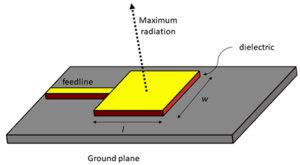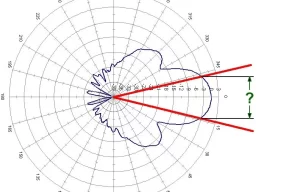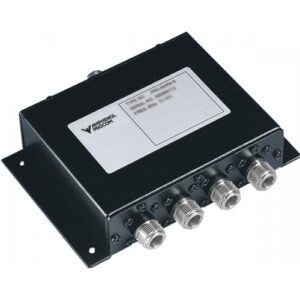Table of Contents
Dielectric Substrates
In designing directional couplers, the type of dielectric substrate used forms their performance, cost, and the extent to which they can be applied. The common materials are FR4, ceramic, and PTFE-all having properties that fit different applications. FR4 is a glass-reinforced epoxy laminate that costs about $2-$5/m2 and hence finds its application as the most feasible material for RF devices in low-budget applications. However, its dielectric constant of 4.2–4.8 and loss tangent of 0.02–0.03 limit its effectiveness in high-frequency applications, typically below 3 GHz. In comparison, ceramic substrates, such as alumina, have a much lower dielectric loss and a dielectric constant ranging from 9.4 to 10, suitable for frequencies exceeding 10 GHz.
PTFE is used in most high-performance directional couplers and features a dielectric constant of 2.1 with less than 0.001 loss tangent, making it suitable for applications that require minimal signal attenuation. It is, for instance, commonly used in satellite communication systems where efficiency and reliability are key. For this kind of system, degradation has to be kept below 0.5 dB for frequency up to 12–18 GHz; this requirement PTFE satisfies very effectively. Whereas PTFE costs between $30–$60 per square meter, while efficiency improvement that it offers outweighs the higher initial cost for most high-precision applications.
Another factor which influences the coupler’s performance and application is substrate thickness. FR4 typically requires 1.6mm of thickness for stability and signal integrity, thus adding weight and bulk. On the other hand, PTFE substrates can be as thin as 0.5 mm, reducing the overall size and weight. In an aerospace application, for instance, PTFE can save as much as 30% in the weight of RF systems using FR4, a fact very important for fuel efficiency and payload optimization. Similarly, ceramic substrates allow for robust thermal management with a thermal conductivity rating of around 20–30 W/m·K compared to FR4’s 0.3 W/m·K, which prolongs life in high-power systems reliably.
The ecological strength of the dielectric substrate is another significant factor in selecting materials. FR4 has resistance to temperature and moisture at a middle level. The working temperature for FR4 ranges from -40°C to 120°C, which allows it to be applied in most consumer electronics and low-stress environments. However, PTFE and ceramics excel under the more extreme conditions, with temperature handling capabilities up to 250°C and beyond. For instance, in an automotive-grade directional coupler used in a high-frequency automotive radar system, a ceramic substrate ensures consistency over the extreme temperature range from -55°C to 175°C. This extended operational range and improvement in durability justify the much greater material costs in such a critical application.
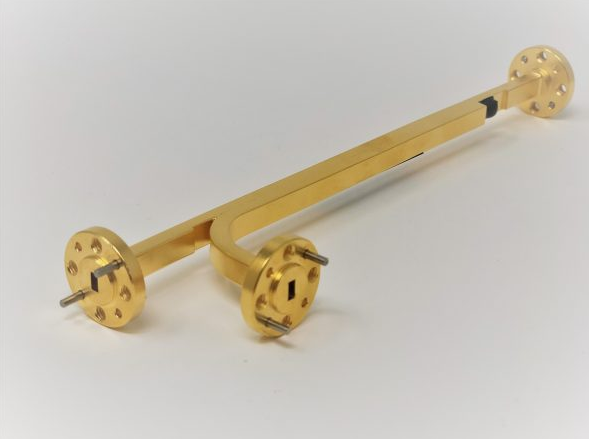
Conductor Layers
Conductor layers are very important parts of directional couplers, in which the efficiency, signal quality, and durability depend. The most conventional material used in conductors is copper, having a huge electrical conductivity of approximately 5.96×10^7 S/m at room temperature, which ensures extremely small resistive losses, which is very important for high-frequency applications. For example, within a coupler operating at 2.4 GHz for Wi-Fi systems, copper layers can achieve insertion losses as low as 0.3 dB, ensuring that the signal strength remains across the circuit. The cost of copper does vary with market conditions, but it generally ranges between $9,000 to $10,000 per metric tonne, making it affordable and effective in most designs.
In general, to enhance their performance and increase their lifetime, copper layers are often plated with other metals such as gold, silver, or tin. Gold plating, because of its excellent resistance to oxidation and corrosion, has seen extensive applications in high-frequency, high-reliability systems. For example, in a satellite communication system operating over 12–18 GHz range, gold-plated copper maintains the same performance for extended time periods-often more than 15 years in orbit. While gold significantly improves durability, it also raises material costs, with gold costing around $60 per gram. Silver has only marginally lower resistance compared to copper at 6.3×10^7 S/m and is another option when the system requires both high conductivity and low cost. In many other cases, such as consumer electronics, a tin plating can provide adequate protection against oxidation at a fraction of the cost.
The performance and lifetime of the coupler would be greatly dependent on the conductor layer thickness. Typical copper thickness used for copper circuits usually ranges from 17 µm to 35 µm, known in general usage within the industry of Printed Circuit Board as 0.5 oz to 1 oz per square foot, but it can go even up to 70 µm-what is 2 oz per square foot-to address high-power operations. For example, a directional coupler for a 5G base station, operating with power in excess of 100 W, will require at least 70 µm of copper to preserve efficiency and thermal stability. However, the opposite is true with very thin layers, like 9 µm, where parasitic inductance and capacitance need to be minimized, as used in many low-power, high-frequency applications to improve signal fidelity.
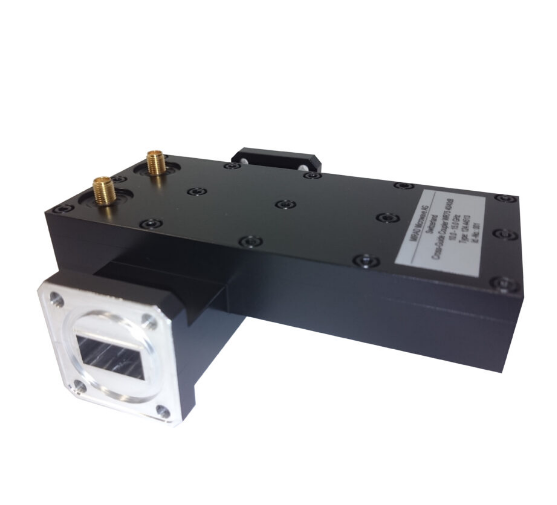
Metal Plating
Metal plating is a vital process in the manufacturing of directional couplers, significantly enhancing their performance, durability, and reliability. Common plating materials include gold, silver, nickel, and tin, each offering specific advantages depending on the application. For example, gold plating is renowned for its exceptional corrosion resistance and excellent electrical conductivity of 4.1×10^7 S/m. It is very often used in high-frequency directional couplers operating above 10 GHz, where consistent performance with low signal loss is needed. A typical 1-micron gold layer on copper adds approximately $0.03 per square centimeter to the production cost, but this investment ensures long-term stability, especially in aerospace or satellite systems with operational lifespans exceeding 15 years.
Silver-plating, with an even better conductivity of 6.3×10^7 S/m, is also commonly used when even minimal resistive losses cannot be tolerated, such as in RF power couplers. The tarnishing of silver tends to deteriorate performance over time when it operates under conditions of humidity. To overcome this problem, the silver-plated directional couplers are often put with a protective coating or operated in controlled conditions. For example, in laboratory-grade equipment operating at 5 GHz, silver plating offers insertion losses as low as 0.2 dB, even outperforming unplated copper. The cost of silver plating is generally lower than for gold, averaging $0.02 per square centimeter for a 1-micron layer, which positions it as an attractive option for performance-oriented designs within a moderate budget.
Nickel plating has a dual purpose: it provides fairly good electrical conductivity of 1.4×10^7 S/m and provides excellent protection against environmental damage. The most common use of nickel is as a barrier layer between copper and gold or silver plating to prevent diffusion and enhance adhesion. For instance, in the industrial series of directional couplers for work in chemical plants, a 5-micron layer of nickel resists attack by corrosive gases at temperatures of up to 300°C. Nickel plating is also rather cheap, adding about $0.01 per square centimeter to production costs, and finds wide application in scenarios where environmental resilience outweighs the need for maximum conductivity.
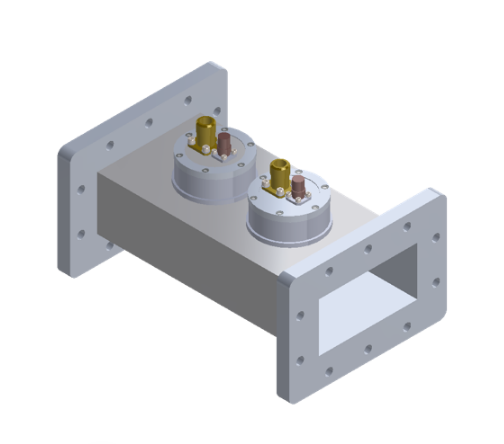
Ferrite Materials
Ferrite materials form an essential part of the design in a class of directional couplers, especially in those applied at low frequencies and high-power applications. Ferrite materials include compounds made up of iron oxide combined with other metals like manganese or zinc, which further improve their magnetic properties. Ferrite materials serve to conduct electromagnetic waves for controlled signal coupling. Manganese-zinc ferrites, for example, have relative permeability of 1,000–10,000, making them ideal for applications below 1 MHz. In contrast, nickel-zinc ferrites are more suited for higher frequencies up to 10 MHz with a permeability range of 100–500. The selection of ferrite material directly influences the performance and effectiveness of the coupler, based on the functioning and the overall cost of the system.
The power-handling capability of ferrite materials makes them irreplaceable in high-power directional couplers. Ferrite cores in a coupler designed for a 100 W RF system can handle power densities of more than 1 W/cm³ without saturation; this capability is associated with minimum signal distortion even under heavy loads. Ferrite materials also have low eddy current losses because of their high electrical resistivity, which is normally higher than 10⁶ Ω·cm. This property is particularly useful in high-power applications, such as AM radio transmitters, where the signal integrity of ferrite-loaded directional couplers is maintained across the frequency range of 540 kHz to 1.6 MHz. The cost of ferrite materials ranges from $20 to $50 per kilogram for industrial-grade cores, depending on the composition and size.
Thermal stability is another important consideration in selecting ferrite materials for directional couplers. Manganese-zinc ferrites used in power applications normally exhibit good performance over the temperature range from -40°C to 125°C. For instance, in an industrial RF heating system operating at 13.56 MHz, ferrite cores can show consistent performance even when exposed to temperatures as high as 100°C for extended periods. Some specialized ferrites, such as those used in space-grade couplers, can operate at temperatures above 200°C without significant degradation in performance. These materials ensure the coupler’s long-term durability in harsh environments, such as aerospace and military applications.
Aluminum Oxide (Alumina)
Aluminum oxide, also known as alumina, is one of the critical materials in the construction of directional couplers because of its excellent thermal, mechanical, and electrical properties. Alumina is a ceramic material with a dielectric constant that ranges from 9.4 to 10.2, depending on its purity. Such a high dielectric constant makes alumina suitable for high-frequency applications, especially in the microwave and millimeter-wave range. As an example, in a 26 GHz operating coupler, alumina supplies low dielectric losses, generally with a loss tangent below 0.0001. Such properties allow for high signal integrity and low attenuation in those applications that require high accuracy.
Among the most valued characteristics of alumina, there is its thermal conductivity from 20 W/m·K for standard-grade products up to more than 30 W/m·K for the high-purity versions. This excellent thermal performance allows for good heat dissipation, hence making alumina suitable for high-power couplers. For example, in a directional coupler designed for 100 W RF systems, alumina substrates can maintain stable performance even under continuous operation. The material’s high melting point of more than 2,000°C also ensures durability in extreme temperature environments. Alumina substrates are widely used in satellite systems where temperature fluctuations can range from -150°C to 200°C. This, along with other superior properties, makes high-purity alumina grades, which normally come at a cost of between $100 and $300 per kilogram, preferable in such demanding applications.
Alumina’s mechanical strength contributes further to the material’s versatility in the design of directional couplers. Alumina possesses a hardness rating of 15–18 GPa on the Vickers scale, making it quite resistant to wear and damage, especially in portable and industrial devices that may be subject to physical stress. For instance, the alumina parts in the military-grade couplers used on radar systems are resistant to the shock and vibration levels above 20 g without cracking and degrading. While being as hard, alumina can retain adequate machinability for high precision fabrication of complicated geometry that advanced coupler design calls for. The process of custom-machined alumina increases production costs up to $10-$50 per piece according to different complexities. Such an investment returns with guaranteed reliability and precision.
Polyimide Layers
Polyimide layers are an excellent material in the construction of directional couplers, especially for applications that require flexibility and high-temperature resistance. Polyimide films, such as Kapton, exhibit excellent thermal stability, with operating temperatures from -269°C to 400°C. This great operating range makes them suitable for space and industrial applications. For example, in satellite systems where components have to bear extreme temperature fluctuations, polyimide layers withstand such conditions without losing their integrity and performance. Prices for polyimide films start at approximately $50 to $200 per square meter, depending on the thickness and grade of the material, although high-performance variants can be considerably more expensive.
Probably one of the best features of polyimide layers is their very good dielectric performance: the dielectric constant is around 3.4, and the dielectric strength is over 300 kV/mm; thus, polyimide layers provide reliable insulation in high-voltage conditions. These properties are crucial in directional couplers for RF and microwave circuits, where the isolation of signals is required. For instance, in a 5G antenna system operating at 28 GHz, polyimide layers minimize signal loss, achieving insertion losses below 0.5 dB. Their low loss tangent, normally below 0.002 at high frequencies, further ensures efficient signal transmission.
Another great advantage of polyimide is its flexibility, which can be used in both flexible and wearable electronics. Directional couplers designed with polyimide layers can be integrated into devices featuring irregular shapes or those requiring movement. In applications such as flexible communication devices or medical monitoring equipment, polyimide-based couplers can maintain their performance even when bent to a radius as small as 5 mm. The polyimide layers are nevertheless quite strong mechanically, the tensile strength being in excess of 150 MPa. Combined, these properties provide strength and assurance of reliability for polyimide films under repeated mechanical stress in portable devices. Thin films of polyimide are generally applied in thicknesses from 12 µm up to 50 µm. Such layers add some $5 to $20 per square meter to the product cost.
Glass-Filled Epoxy
Glass-filled epoxy is a common material for directional couplers due to its excellent mechanical properties, good thermal stability, and low cost. It consists of glass fiber-reinforced epoxy resin, whose tensile strength reaches 300 MPa. This is why it possesses an exceptionally high strength-to-weight ratio and therefore is extensively applied to RF and microwave printed circuit boards. For example, FR4-a standard grade of glass-filled epoxy-is used extensively in directional couplers operating below 3 GHz. The cost of FR4 boards is roughly in the range of $2 to $5 per square meter and, therefore, are an inexpensive solution for consumer electronics and general-purpose applications.
Thermal properties of glass-filled epoxy significantly affect its performance. With a typical Tg ranging from 120°C to 180°C, it resists moderate thermal stress without deforming. High-performance grades with a Tg of 200°C or higher are available for more extreme applications, including those using automotive radar systems in high-temperature environments. In such systems, directional couplers made with glass-filled epoxy continue to perform consistently, even following exposure to temperatures as high as 150°C. While high-Tg grades increase costs to around $10 to $20 per square meter, they ensure reliability in thermally challenging scenarios.
Glass-filled epoxy also exhibits excellent electrical insulation properties, such as a dielectric constant of approximately 4.5 and a dielectric strength greater than 20 kV/mm. This makes it suitable for RF applications that demand high signal isolation. However, the loss tangent of the material is usually around 0.02, which can lead to higher signal losses at frequencies above 3 GHz, limiting its use in high-frequency designs. For example, FR4 ensures efficient signal transmission with insertion losses under 1 dB in directional couplers for Wi-Fi routers operating at 2.4 GHz. However, for 5G applications needing operation at 28 GHz, other, more expensive materials like PTFE or ceramic might be used instead.

